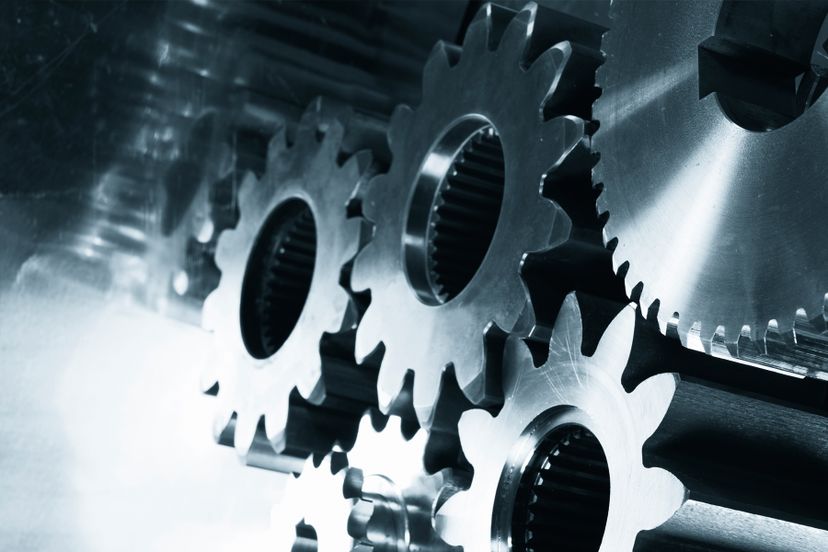
About This Quiz
Whether you know it or not, you probably use gears several times each day. Gears are used in a wide variety of mechanical devices including wrist watches, bathroom scales, washing machines and, of course, automobiles.On any gear, the ratio is determined by the distances from the center of the gear to the point of contact. For instance, in a device with two gears, if one gear is twice the diameter of the other, the ratio would be 2:1.
Spur gears are the most common type of gear. They have straight teeth, and are mounted on parallel shafts. Sometimes, many spur gears are used at once to create very large gear reductions.
Spur gears are used in many devices that you can see all over HowStuffWorks, like the electric screwdriver, dancing monster, oscillating sprinkler, windup alarm clock, washing machine and clothes dryer. But you won't find many in your car. This is because the spur gear can be really loud. Each time a gear tooth engages a tooth on the other gear, the teeth collide, and this impact makes a noise. It also increases the stress on the gear teeth. To reduce the noise and stress in the gears, most of the gears in your car are helical.
Advertisement
The teeth on helical gears are cut at an angle to the face of the gear. When two teeth on a helical gear system engage, the contact starts at one end of the tooth and gradually spreads as the gears rotate, until the two teeth are in full engagement. This gradual engagement makes helical gears operate much more smoothly and quietly than spur gears. For this reason, helical gears are used in almost all car transmissions.
Bevel gears are useful when the direction of a shaft's rotation needs to be changed. They are usually mounted on shafts that are 90 degrees apart, but can be designed to work at other angles as well. The teeth on bevel gears can be straight, spiral or hypoid.
Worm gears are used when large gear reductions are needed. It is common for worm gears to have reductions of 20:1, and even up to 300:1 or greater.
Advertisement
Many worm gears have an interesting property that no other gear set has: the worm can easily turn the gear, but the gear cannot turn the worm. This is because the angle on the worm is so shallow that when the gear tries to spin it, the friction between the gear and the worm holds the worm in place. This feature is useful for machines such as conveyor systems, in which the locking feature can act as a brake for the conveyor when the motor is not turning.
Rack and pinion gears are used to convert rotation into linear motion. A perfect example of this is the steering system on many cars. The steering wheel rotates a gear, which engages the rack. As the gear turns, it slides the rack either to the right or left, depending on which way you turn the wheel. Rack and pinion gears are also used in some scales to turn the dial that displays your weight.
Any planetary gearset has three main components: the sun gear, the planet gears and the planet gears' carrier, and the ring gear.
Advertisement
Many modern gears use a special tooth profile called an involute. This profile has the very important property of maintaining a constant speed ratio between the two gears.